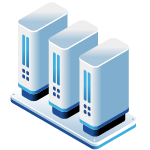The demand for GPU compute resources has expanded alongside the growth of AI and machine learning workloads. Users today have multiple pathways to access these resources depending on their requirements for cost, control, and performance. This article breaks down three common tiers of AI compute services, their advantages, and trade-offs.
1. AI API Endpoints
AI APIs, such as those offered by OpenAI and other providers, deliver pretrained model access through hosted endpoints. Users interact with the API by submitting data and receiving inference results.
Advantages:
- Ease of Use: No infrastructure management is required. Models are updated and optimized by the service provider.
- Access to Latest Models: Providers regularly release models that have been fine-tuned for general-purpose tasks.
- Scalability: These platforms scale automatically with usage.
Disadvantages:
- Variable Costs: Pricing is usage-based, often per token or operation. High usage or complex tasks can cause costs to escalate quickly.
- Data Privacy: Data is processed on third-party infrastructure, which raises concerns for sensitive information or proprietary data.
- Limited Customization: Users have little control over the model architecture or hardware configurations.
This model suits organizations with light workloads or early-stage projects but may not scale economically for sustained, high-volume use.
2. Public Cloud GPU Rentals (Hourly GPU Instances)
Public cloud providers offer access to GPUs billed by the hour. This method is widely used for machine learning training, inference, and fine-tuning tasks that demand more control over model execution than APIs allow.
Advantages:
- On-Demand Access: Users can spin up GPU instances as needed and shut them down when done, avoiding long-term commitments.
- Flexibility: Ability to select GPU types, memory configurations, and install specific drivers or libraries.
- Rapid Scaling: Ideal for burst workloads or projects requiring high compute power temporarily.
Disadvantages:
- Variable Performance: Public cloud GPU instances can face noisy neighbor effects. Time-slicing methods reduce isolation, affecting predictability.
- Cost Over Time: While flexible, hourly charges accumulate with continuous use. Long-term or constant workloads become expensive.
- Hardware Limitations: Full access to physical GPU capabilities (like Multi-Instance GPU partitioning or advanced networking) is often restricted.
This model serves users who have graduated from API services and need increased control or performance without the responsibility of managing hardware.
3. Private Cloud GPU Deployments
Private cloud GPU infrastructure delivers dedicated access to physical GPUs. Providers like OpenMetal build environments where users control the entire stack — from the bare metal server to virtual machines or containers.
Advantages:
- Data Privacy and Security: All data remains within the private environment, making it suitable for regulated industries and sensitive workloads.
- Full Hardware Control: Users can utilize GPU features not available in public cloud, such as NVIDIA’s Time-Slicing or Multi-Instance GPU (MIG) mode for secure partitioning and resource isolation.
- Predictable Performance: No shared tenancy or resource contention. Applications benefit from consistent throughput and latency.
- Customization: Systems can be configured with specific CPU, RAM, storage, and network setups to meet specialized requirements.
Disadvantages:
- Higher Initial Cost: Upfront provisioning or longer-term commitments may be necessary, although the cost per hour reduces over time compared to public cloud.
- Management Overhead: Users are responsible for maintaining the environment unless bundled with managed services.
Private cloud GPU deployments are ideal for sustained AI workloads, privacy-sensitive data processing, or organizations requiring unique configurations, such as running their own public AI endpoints or tightly managing performance.
OpenMetal’s Private Cloud Model
At OpenMetal, we see growing demand from organizations needing both small and large GPU configurations. Our dedicated GPU servers and clusters are designed to address this need by offering:
- Small footprints with 1-2 dedicated GPUs — uncommon in private cloud offerings.
- Large-scale options with up to 8 GPUs for demanding workloads.
- Hardware-level control, including support for H100 and A100 GPUs with MIG capabilities, allowing secure partitioning and concurrent tasks without performance degradation.
This approach supports a range of users — from those seeking an alternative to costly API consumption, to enterprises requiring isolated, consistent GPU compute environments for AI/ML projects.
Choosing the Right Tier
Selecting between these compute tiers depends on workload scale, data sensitivity, cost constraints, and performance needs:
| Tier | Best For | Key Risk/Tradeoff |
|---|---|---|
| API Endpoints | Light or unpredictable workloads | High variable costs and loss of control |
| Public Cloud GPUs | Training, fine-tuning, scalable experiments | Long-term cost, shared resource unpredictability |
| Private Cloud GPUs | Large-scale, sensitive, or high-performance workloads | Initial investment and ongoing infrastructure management |
Understanding these distinctions helps organizations optimize both cost and performance while meeting security and compliance requirements.
Interested in GPU Servers and Clusters?
GPU Server Pricing
High-performance GPU hardware with detailed specs and transparent pricing.
Schedule a Consultation
Let’s discuss your GPU or AI needs and tailor a solution that fits your goals.
Private AI Labs
$50k in credits to accelerate your AI project in a secure, private environment.
Read More From OpenMetal


































